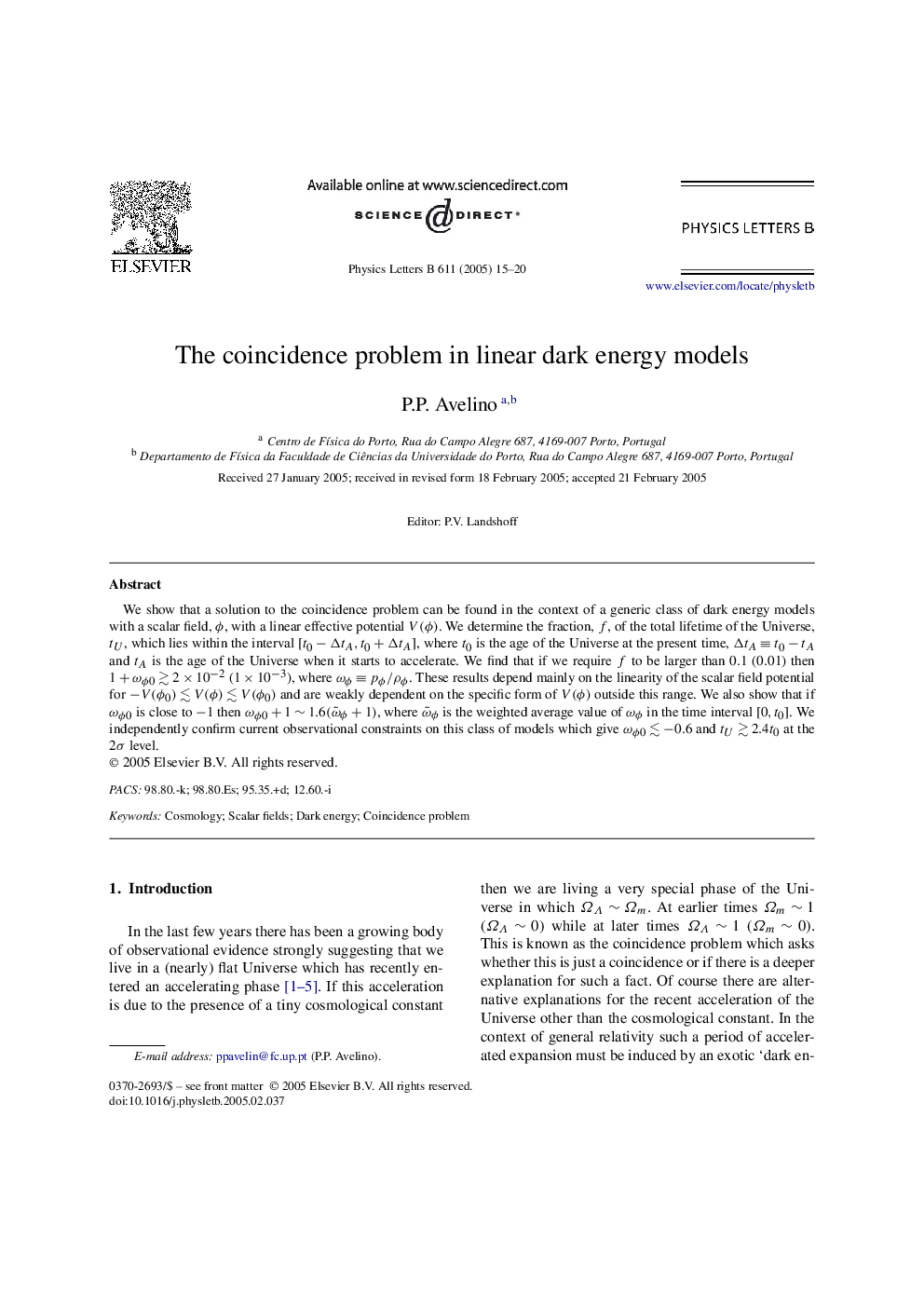| Article ID | Journal | Published Year | Pages | File Type |
|---|---|---|---|---|
| 9861415 | Physics Letters B | 2005 | 6 Pages |
Abstract
We show that a solution to the coincidence problem can be found in the context of a generic class of dark energy models with a scalar field, Ï, with a linear effective potential V(Ï). We determine the fraction, f, of the total lifetime of the Universe, tU, which lies within the interval [t0âÎtA,t0+ÎtA], where t0 is the age of the Universe at the present time, ÎtAâ¡t0âtA and tA is the age of the Universe when it starts to accelerate. We find that if we require f to be larger than 0.1 (0.01) then 1+ÏÏ0â³2Ã10â2 (1Ã10â3), where ÏÏâ¡pÏ/ÏÏ. These results depend mainly on the linearity of the scalar field potential for âV(Ï0)â²V(Ï)â²V(Ï0) and are weakly dependent on the specific form of V(Ï) outside this range. We also show that if ÏÏ0 is close to â1 then ÏÏ0+1â¼1.6(ÏËÏ+1), where ÏËÏ is the weighted average value of ÏÏ in the time interval [0,t0]. We independently confirm current observational constraints on this class of models which give ÏÏ0â²â0.6 and tUâ³2.4t0 at the 2Ï level.
Related Topics
Physical Sciences and Engineering
Physics and Astronomy
Nuclear and High Energy Physics
Authors
P.P. Avelino,
